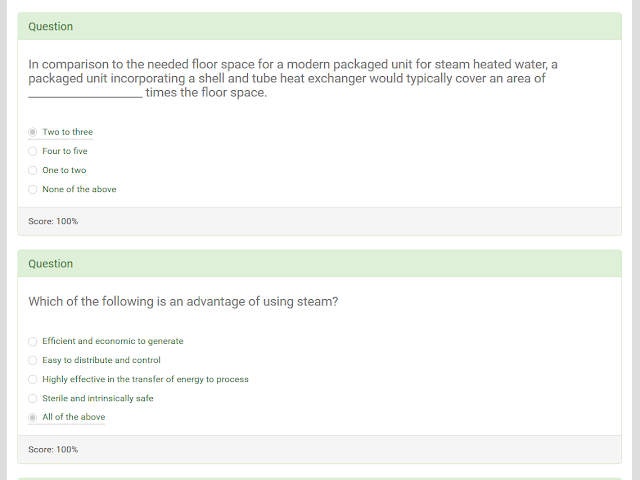Steam can hold nine to ten times as much potential energy as an equivalent mass of water.
- T
- F
What is the heat energy which causes a change of state?
- Dry heat
- Total heat
- Latent heat.
- Pressurized heat
- T.
- F
- Two to three.
- Four to five
- One to two
- None of the above
Which of the following is an advantage of using steam?
- Efficient and economic to generate
- Easy to distribute and control
- Highly effective in the transfer of energy to process
- Sterile and intrinsically safe
- All of the above
- 0°C 32°F
- 100°C 212°F
- It depends on the pressure.
- It depends on the volume
- It depends on the efficiency of the boiler
In order to make steam flow from its generation point to another point at which it will be utilized, there must be a difference in_____________.
- Volume
- Temperature
- Enthalpy
- Pressure.
- None of the above
The temperature above the saturation temperature is called
- Superheated steam
- Degree of superheat of the steam.
- Subsaturated water
- None of the above
Compared to steam at saturation temperature, superheated steam:
- Contains more latent heat
- Is at higher temperature, or pressure, or both
- Occupies a larger volume
- All of the above
When water reaches its saturation point, it begins to change from a liquid to a gas.
- False
- True.






Comments
Post a Comment